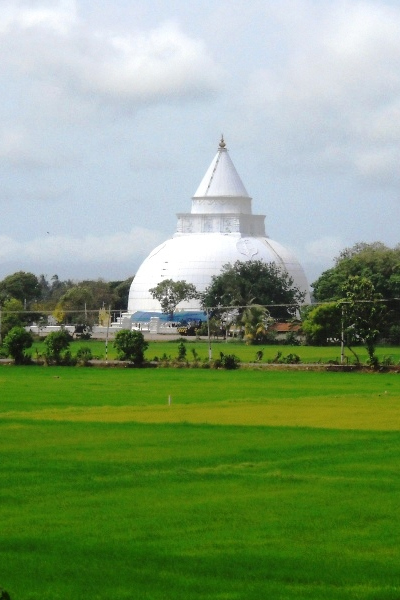

Designated as a Wildlife Sanctury in 1900, Yala is the most visited and second largest National Park in Sri Lanka. It is situated in Southern & Uva Province of Sri Lanka, at a distance of 300km along the coastline south from Colombo, on the southeast of the island. The Park consists of five blocks covering an area of 979km², although only two blocks covering an area of 141km² are open to the public. This park is primarily shrub jungle with several salt and fresh water lagoons. The vegetation comprises mainly of thorny scrub plains, fresh water lakes, patches forest, rivers and beaches. Yala National Park is home to a vast number of endangered species of flora and fauna.
Yala is best known for its variety of wild animals. It is important for the conservation of Sri Lankan Elephants, Leopards, Peacocks, Sloth Bears, and aquatic birds. The park is also a popular destination to spot Crocodiles, Wild Boar, Wild Water Buffalo, Flamingos and Peacocks. The number of mammals that has been recorded from the park is 44. Yala National Park boasts the highest leopard density in the world. Yala provides shelter for some of the rarest mammals of Sri Lanka including the Red Slender Loris, Toque Macaque, and Purple-faced Langur, who according to IUCN clarifications are endangered due to habitat loss.
Yala is also one of the 70 Important Bird Areas (IBAs) in Sri Lanka. Of 215 bird species of the park, six are endemic to Sri Lanka. They are Sri Lanka grey hornbill, Sri Lanka jungle fowl, Sri Lanka wood pigeon, crimson-fronted barbet, black-capped bulbul, and brown-capped babbler. The number of water birds inhabiting wetlands of Yala is 90 and half of them are migrants. The migrant great white pelican and resident spot-billed pelican are also have been recorded. Other water birds attracted to the Yala lagoons include lesser flamingo, pelicans and rare species such as purple heron, night herons, egrets, purple swamphen and Oriental darter. Thousands of waterfowls migrate to the lagoons of Yala during the northeast monsoon.
It is noted that the Yala National Park is closed to public in September and October.








